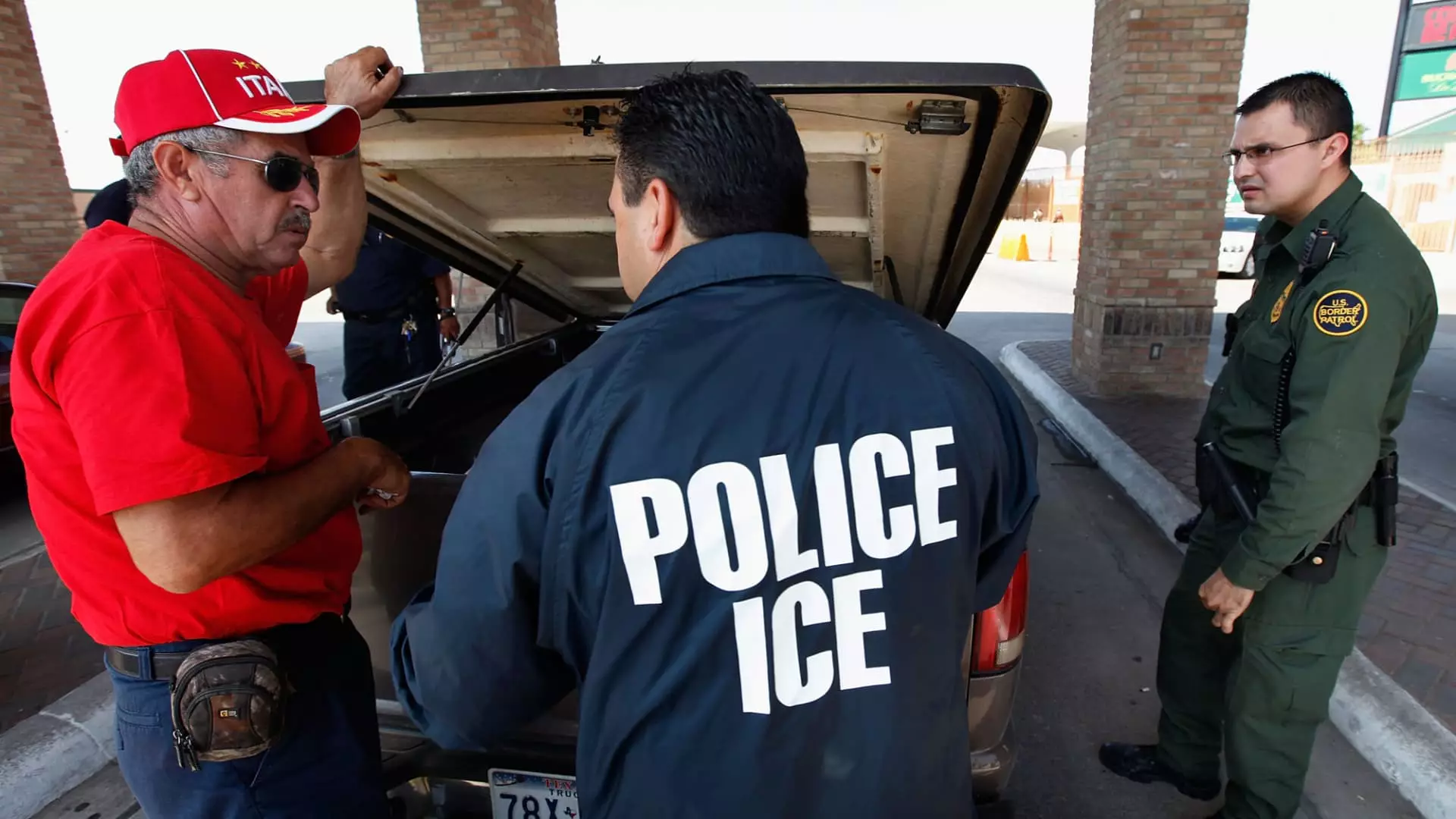The issue of immigration has long been a contentious topic in America, drawing polarizing viewpoints from various political and social groups. Recently, shocking data released by the Immigration and Customs Enforcement (ICE) agency revealed that over 13,000 immigrants convicted of homicide, either in the U.S. or abroad, are existing outside of the agency’s detention facilities. This situation raises critical questions about public safety, immigration policies, and the efficacy of federal enforcement efforts, particularly given the significant number of individuals living freely under the non-detained docket.
The information was shared with Congress following a request from Republican Congressman Tony Gonzales of Texas and it reflects data that dates back to July 21. The sheer magnitude of the statistic—13,099 convicted homicide offenders—evokes alarm regarding the implications for American society. These individuals are part of a pool of more than 7.5 million immigrants awaiting resolution of their immigration cases. The lack of clarity on how many crossed into the country under prior administrations, particularly during Donald Trump’s presidency, complicates the narrative about who is responsible for the current immigration landscape.
The reality that some of these immigrants might not have been flagged upon entering the country poses additional layers of complexity. Law enforcement officials indicated that many went undetected, often due to a lack of communicated criminal history from their home countries. Systemic gaps in information sharing between international law enforcement agencies and U.S. Customs can lead to dire consequences, suggesting an urgent need for reform.
Drawing upon this information, former President Trump seized the opportunity to critique the Biden administration’s immigration policies, specifically targeting Vice President Kamala Harris. By labeling these individuals as “hard, tough, vicious criminals,” Trump attempts to frame the current administration as inadequate in safeguarding American borders and citizens. This rhetoric not only stirs fear but also reinforces existing narratives among specific voter demographics regarding crime and immigration.
By framing the situation in purely dramatic terms, Trump’s commentary creates a narrative that might resonate emotionally with constituents yet overlooks the myriad nuances surrounding immigration and crime. The simplistic portrayal of immigrants as threats is counterproductive to understanding the broader systemic issues at play and risks further stigmatizing already marginalized communities.
The operational challenges faced by ICE cannot be ignored. With limited resources, the agency is tasked with prioritizing individuals who have been convicted of serious crimes. However, the practical realities of locating and arresting these individuals are significant, raising questions about the effectiveness of ICE’s strategies. The agency is caught in a cycle of grappling with agency capabilities while managing public expectations and demands for enhanced security.
Moreover, the existence of “sanctuary cities” further complicates ICE’s mandate. In many instances, local and state jurisdictions opt not to inform ICE when former convicts complete their sentences and are released, creating an additional barrier to locating and deporting individuals who have committed severe offenses. This interplay of local policies and federal enforcement objectives illustrates the intricate web of immigration issues that demand coordinated strategies instead of reactionary measures.
This alarming situation underlines the urgent need for comprehensive immigration reform that addresses both the immediate and systemic issues related to criminality among immigrant populations. It necessitates creating protocols for better data sharing between countries, as well as enhancing collaboration between federal and local entities to ensure that public safety remains a priority without compromising the rights of immigrants.
Ultimately, while the presence of convicted homicides among undocumented populations is indeed a concern, addressing these challenges necessitates a nuanced approach that goes beyond sensationalized headlines. Solutions will require the cooperation of various stakeholders, including lawmakers, law enforcement agencies, and community organizations, all aimed at fostering a safe and just environment for all residents, irrespective of their immigration status. Only through a concerted, inclusive effort can the United States navigate this complex issue while maintaining its foundational values of justice and opportunity.


Leave a Reply